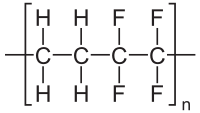
Photo from wikipedia
Abstract An ethylene tetrafluoroethylene (ETFE) cushion structure is an attractive approach as the building facade for aesthetic and sustainability reasons. This paper focuses on the operating performance of mechanically ventilated… Click to show full abstract
Abstract An ethylene tetrafluoroethylene (ETFE) cushion structure is an attractive approach as the building facade for aesthetic and sustainability reasons. This paper focuses on the operating performance of mechanically ventilated double ETFE cushion structure and indoor thermal environment in the National Aquatics Center of China, the largest building in the world utilizing the ETFE cushion structure as its building facade. Without mechanical ventilation in the cavity, the cavity air temperature reaches as high as 46–57 °C with a solar irradiance ranging 300–800 W/m2. It results in a sensible load of 78–238 W/m2 in the large space of the aquatics center without shading devices. Air temperature in the cavity could be decreased by 7.3–10.5 °C by virtue of a mechanical ventilation with an air flow rate of 830,000 m3/h. A total heat quantity ranging 2300–5800 kW is evacuated in the cavity with a heat exhaust efficiency ranging from 9.62 to 26.98. The inner surface temperature of the building envelope is significantly decreased with the help of mechanically ventilated cavity integrated with shading devices. It contributes to a lower black globe temperature in the occupied zone and a lower indoor heat gain through longwave radiation and air convection. Furthermore, preliminary test results of natural ventilation in the double ETFE cushion structure reveal its feasibility and potential for energy conservation.
Journal Title: Solar Energy
Year Published: 2018
Link to full text (if available)
Share on Social Media: Sign Up to like & get
recommendations!